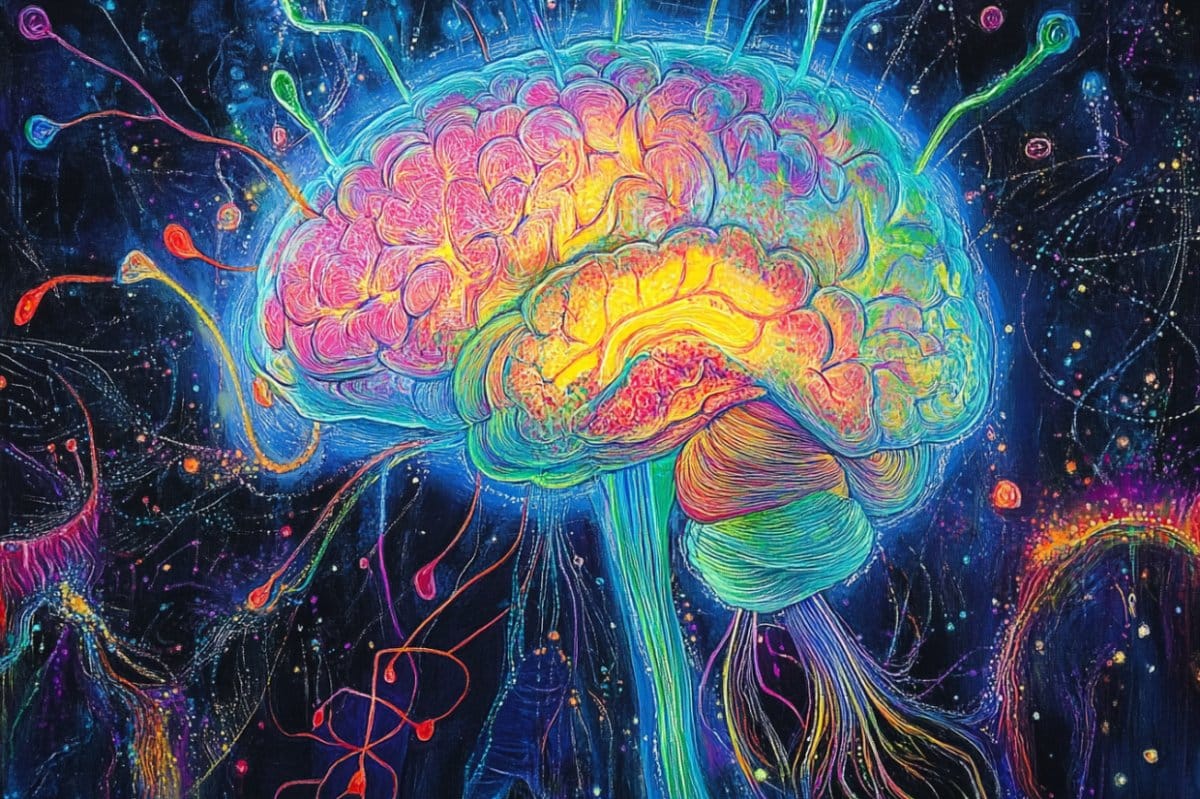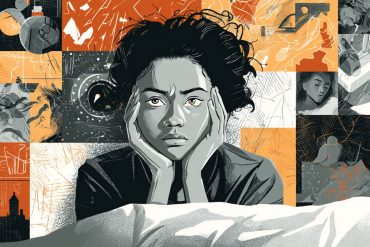Summary: New research spotlights the habenula, a tiny but powerful brain region, as a key player in addiction, motivation, and emotional regulation. Studies show that the habenula’s circuitry influences how the brain processes rewards, disappointment, and drug cravings, offering potential drug targets like the GPR151 receptor.
Scientists are now working to develop compounds that could modulate habenula function, aiming to reduce chemical dependency and ease withdrawal. These discoveries could also lead to new treatments for depression, highlighting the habenula’s wider impact beyond addiction.
Key Facts:
- Habenula’s Role: This tiny brain structure regulates reward, motivation, and disappointment, influencing addiction and emotional resilience.
- New Drug Target: Researchers are developing drugs targeting the GPR151 receptor in the habenula to reduce opioid and nicotine dependence.
- Beyond Addiction: Findings suggest habenula-based therapies could also help treat chronic depression and motivational disorders.
Source: Rockefeller University
Major scientific discoveries can arise from simple decisions: say, by simply looking where virtually no one else has.
Such was the case for Ines Ibañez-Tallon, a research associate professor in the Laboratory of Molecular Biology at The Rockefeller University, who over the past decade has revealed how one small, understudied region of the brain plays an outsized role in addiction and substance abuse—work that’s sparked a federally funded search for new medications that may help people beat chemical dependencies.

Known as the habenula, this narrow strip of gray and white matter—so tiny it’s considered a microstructure—is an ancient piece of the brain, first appearing in vertebrates about 360 million years ago.
Digging deep into this little node, Ibañez-Tallon uncovered an extremely complex and highly connected command center—one that’s part finely tuned sensor and part lightning-fast switchboard, detecting and sending chemical signals to other brain regions, including those that produce pleasure-inducing and modulatory neurotransmitters such as dopamine, acetylcholine, serotonin, and norepinephrine.
She’s also documented that the habenula helps regulate emotional states and cognitive behaviors, including motivation, disappointment, depression, and stress.
In addition to identifying a potential drug target that could directly address opioid addiction, her insights also point to how positive behaviors could boost healthy reward responses. We spoke to her about how she brought this little-known brain region to light.
How did you first link the habenula to addiction?
Initially I was studying nicotinic receptors, which—as you can tell from the name—pick up chemical signals from nicotine sources like tobacco, but their primary job is to mediate the responses to acetylcholine, which is involved in different essential functions, including memory and attention.
Around that time, genome-wide studies had found that about 37% of people of European descent—and a lower prevalence in other populations—carry specific variants in nicotinic receptor genes, and that these people had an especially difficult time quitting smoking. But no one knew why. So my team put these mutated genes into mice, and they started to really like to drink nicotine.
To investigate that, we used a technique we developed that uses what we call tethered toxins, which can turn switches in the neural circuitry on or off. Manipulating the circuitry led us to the problem: a mutated nicotinic receptor subunit called alpha five (α5) located in a region connected to the habenula called the interpeduncular nucleus (IPN).
That was an intriguing discovery, so we started delving more deeply into the habenula’s structure, circuitry, and molecular dynamics.
Later we discovered that it has a very high concentration of opioid receptors as well.
Is the high concentration of nicotinic and opioid receptors in the habenula the root of the problem?
That’s part of it, but the habenula’s location is key too. It’s found in the epithalamus, which is just above the thalamus. This region is known for linking the forebrain, brainstem, and hindbrain together.
So the habenula is like a well-positioned antenna receiving really fast signals from the central nervous system that it then sends to connected parts of the brain, which respond with either aversion or reward mediated by specific neurotransmitters.
What we think this adds up to is that the habenular circuit provides a very basic learning mechanism that allows for fast adaptation to behaviors. So, for example, the first time you have a cigarette, your body has an aversive reaction to it.
You become nauseated, your lungs burn—but at the same time, the nicotine activates a neural pathway in the habenula, which causes the release of different neurotransmitters—acetylcholine, which makes you feel alert; dopamine, which feels like a reward; and serotonin, which is an antidepressant.
So now you feel alert and focused, but also calm and relaxed. That initial physical aversion has been turned into a reward for the brain. That’s why it’s so hard to quit.
Opioid receptors function slightly differently. Because they’re associated with pain processing, at first they suppress activation of the neural pathway rather than stimulate it.
But that changes with the second consumption of an opioid like oxycodone or fentanyl. Then the habenula sends messages to the IPN, which leads to inhibited release of neurotransmitters that would signal that a change has occurred.
Without negative feedback from the IPN back to the habenula, opioid consumption escalates and leads to increased intake and maladaptive mechanisms.
Can we use these insights into the habenula help stop chemical dependency?
That’s our hope. For many years I have collaborated on habenula research with Paul Kenny at the Icahn School of Medicine at Mount Sinai, and about a decade ago we discovered a receptor called GPR151.
We think it has a lot of potential as a drug target. It’s an orphan receptor, which means we don’t currently know what it’s supposed to bind with. But our research has shown that if we delete it from mice, they are less sensitive to opioids and nicotine. The downside is that they take more of the drug because they have less sensitivity to it.
They’re looking for their missing high.
Exactly.
So how might GPR151 alleviate this problem?
GPR151 is located by the synapses of habenula neurons that release neurotransmitters to postsynaptic neurons in the IPN. So we’re on the hunt for a ligand—a molecule GPR151 can bind with. We could use this ligand to modulate opioid sensitivity so that people feel satiated by a much lower amount of the drug. They’d stop seeking their missing high.
Would this approach reduce the intake of opioids, or would it end it completely?
We hope it’s a first step to quitting entirely. The pain of withdrawal is so intense, many people find it just too difficult to get through—so that’s when they’re most likely to relapse. And because the habenula has learned from prior experience, using the addictive substance will give them instant relief due to the release of the neurotransmitters. It’s this feedback loop that we want to disrupt.
What’s also appealing about this approach is how precise we can be. Opioid receptors are found throughout the body and have a range of functions, but GPR151 is mainly expressed in the habenula. That means we could regulate it without having an impact on the other receptors.
How is your search for that missing ligand going?
For the past four years, we’ve been supported by a substantial grant from the NIH’s Helping to End Addiction Long-term Initiative, or HEAL. A team at NIH is helping us to screen tens of thousands of potential drugs. We’ve already assessed a million chemical compounds and natural products.
Thus far, we’ve narrowed it down to seven chemotypes. The HEAL team and Ted Kamenecka at Scripps Florida are synthesizing approximately a hundred analogs of these selected chemotypes to enhance activity and stability. From these, the most effective compounds are identified through cell assays, and further evaluated using mouse brain tissue samples.
The next phase will be to explore the pharmacodynamics in vivo—meaning we’d look into how the drug affects the body. And then eventually, with FDA approval, it could go on the market.
Earlier you said that the habenula provides a basic learning loop for quickly adapting to behaviors. Do your findings have implications beyond addiction?
Absolutely. We’re just beginning to understand the huge impact of this tiny structure. For instance, we now know that it’s helping to regulate your motivational states. Broadly speaking, the habenula assesses an input on a very fast, very elemental level, and teaches you something for the next encounter with it.
The habenula gets activated by disappointment— or an anti-reward— when you do not receive the reward you were expecting. Thus, if you previously got an anti-reward signal from something, the habenula is primed to alert you again by changing the levels of serotonin, dopamine, acetylcholine, etc.
We’re finding that this is true not just with regard to chemical dependency but also to everyday actions. If you don’t get what you hoped for—whether it’s the lead role in a play or certain high off a hit of fentanyl—you’ll feel disappointment. Now the habenula will actively suppress the neurotransmitter surge you expected.
Finding the right balance between being disappointed and being rewarded teaches us how to navigate the world.
Does that mean you can also boost the habenula’s reward response through positive behaviors, such as exercise?
We’re actually looking into this right now, because it’s well known that exercise can induce the release of neurotransmitters like dopamine. We’re trying to understand how the habenula might be involved by studying mice that have a mutation in the GPR151 receptor—the same one we’re exploring for curbing addiction.
These mice don’t like to run, which on a survival level is a big problem, because a mouse’s first response to a predator is to flee.
Perhaps GPR151 enables a feeling of reward from movement that reinforces running behavior, and loss of function of this receptor disables that feeling.
The habenula has also been linked to depression. What’s the connection?
It’s possible that the habenula is picking up behavioral or chemical changes—both common in depression—and sharing them with its network, but we also discovered a set of unique pace-making neurons in the habenula that could be implicated.
These cells independently keep a regular beat, just like the heart, but they can be affected by inputs to the body.
Deep-brain stimulation of the habenula has been tried as a treatment for chronic, treatment-resistant depression, and it seems to work, though its use is still very limited. It’s possible that it restarts the system, a bit like electroshock therapy does.
Actually, a similar approach has been used to correct motor control issues in people with Parkinson’s, which affects a part of the brain near the habenula.
To go from identifying some receptors in a little-known part of the brain to potential treatment for chemical dependency and new insights into chronic depression is quite a scientific journey.
Yes, and all from basic research! At the beginning, we were just trying to understand a neural circuit. It’s amazing what we’ve learned since then thanks to the dedication and collaboration of our team.
About this addiction and depression research news
Author: Katie Fenz
Source: Rockefeller University
Contact: Katie Fenz – Rockefeller University
Image: The image is credited to Neuroscience News







